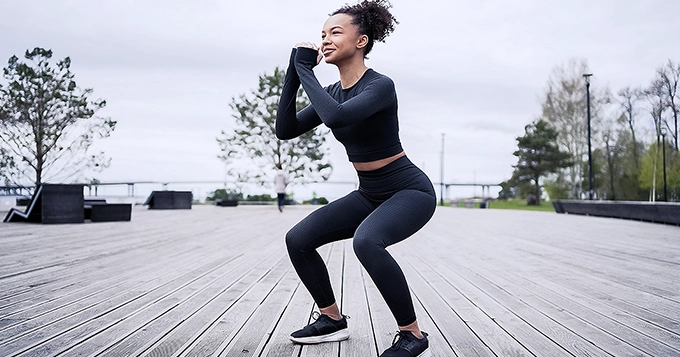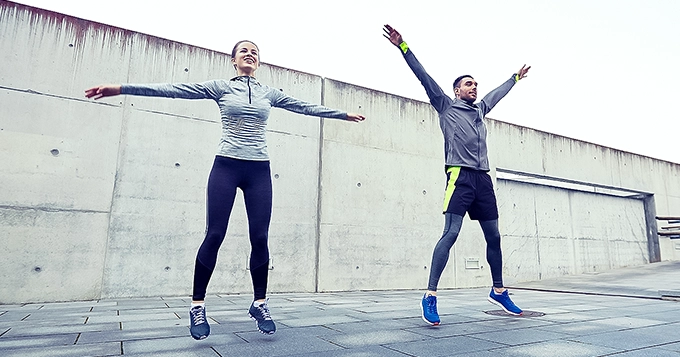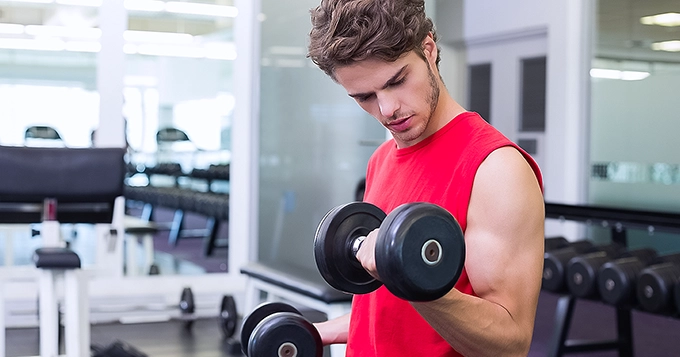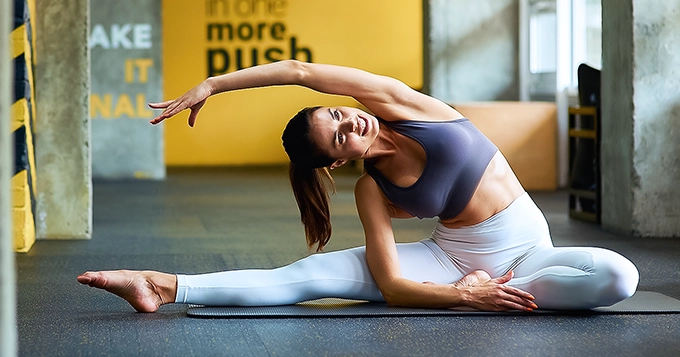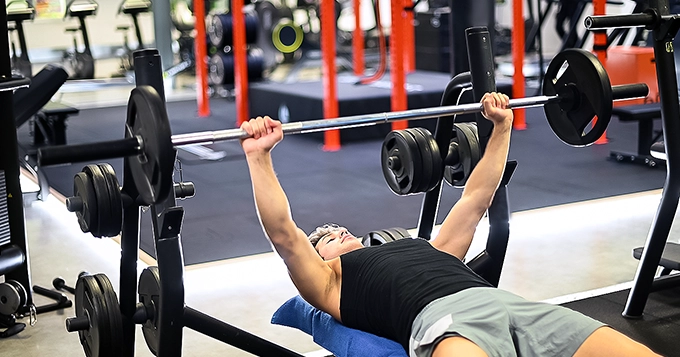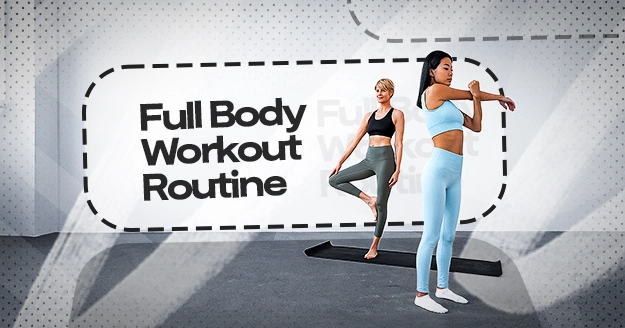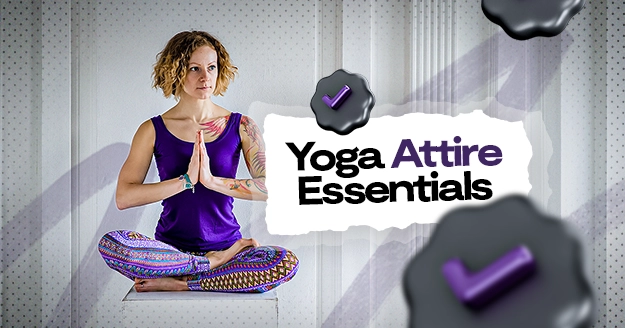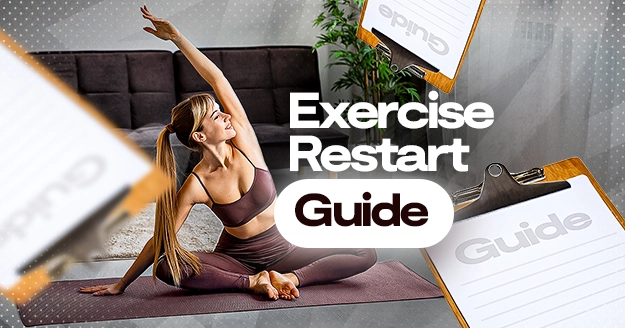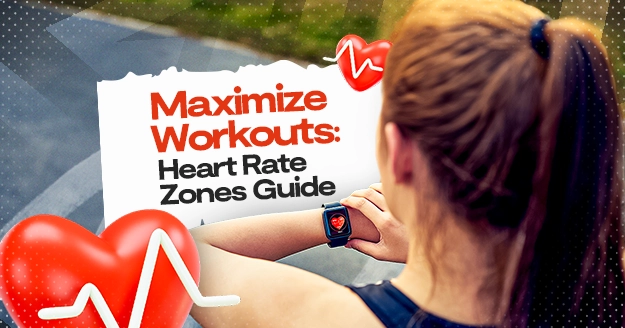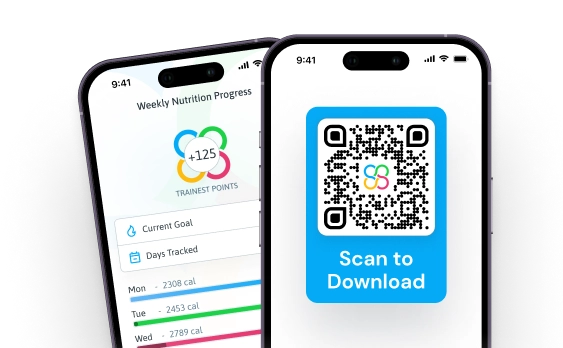When it comes to fitness, having a well-rounded workout routine is key to achieving your goals effectively. A full body workout plan targets all major muscle groups in a single session, providing maximum impact in minimal time. In this article, we’ll map out a comprehensive full body workout routine that will help you build strength, improve endurance, and enhance overall fitness.
Benefits of a Full Body Workout Routine
- Time Efficient
We strive for time efficiency in all aspects of our lives, so why not apply the same principle to our workouts? Full-body training sessions burn significantly more calories compared to isolated workouts focusing solely on arms or shoulders. Compound exercises, such as squats and lunges, engage major muscle groups that require more energy to coordinate movement, handle heavier loads, and deliver oxygen to the working muscles, making them far more effective than single-joint exercises targeting only a few small muscles.
- Build More Muscle
While isolation exercises play a crucial role in muscular hypertrophy, they may not be ideal for everyone. Overly focused isolation work once a week often isn’t frequent enough for significant muscle size gains. Although dedicated “leg day” is beneficial, it doesn’t justify neglecting your lower body for the rest of the week. Full-body training, with appropriate loads and rest, allows you to target each muscle group two to three times per week, leading to increased muscle growth.
- Increase Strength
If your goal is to get stronger, it’s crucial to focus on movements that allow you to lift the most weight. Compound exercises like deadlifts, squats, and bench press variations are full body workout exercises that demand maximum effort from your entire body. Incorporating these exercises as the cornerstone of your workout program will consistently challenge your body, effectively building strength over time.
- Convenient
You’re not limited to doing a full body workout at gym; you can do it at home, too!
Imagine being able to work out whenever and wherever you want, without disrupting your routine. That’s the advantage of total-body training. By exercising the whole body as a single unit, you can stimulate the same muscles in one session that might take two or three isolation-based workouts. This efficiency means you can maintain your fitness regimen even with a busy travel schedule, or devote time to other activities like swimming, biking, or yoga, without sacrificing your strength training.
- Balanced Development
By targeting all muscle groups equally, you can attain a well-proportioned physique with consistent muscle growth across your entire body.
Why balanced development is important:
- Reduced Risk of Imbalances: Minimize the likelihood of muscle imbalances, which can lead to poor posture.
- Improved Functionality: Enhance functional movement patterns and overall physical capabilities by ensuring all muscle groups are equally developed
- Symmetrical Appearance: Foster a harmonious and balanced look, improving overall aesthetics and body symmetry.
How to Plan a Full Body Workout
Don’t know how to build a full body workout plan? Continue reading.
A full-body workout plan has three parts: warm-up, main workout, and cooldown. Let’s break these three down.
-
Warm-Up
The warm-up phase is crucial for priming your body before a workout, enhancing blood flow to your muscles, increasing flexibility, and minimizing the risk of injury. Here’s a breakdown of how to structure your warm-up:
- Dynamic Stretching: Do some dynamic stretches that mimic the movements you’ll be doing during your workout. These can include arm circles, leg swings, hip circles, and trunk rotations. Aim for 5-10 minutes of dynamic stretching to loosen up your muscles and joints.
- Light Cardio: Incorporate 5-10 minutes of light cardio to elevate your heart rate and increase blood flow. You can choose activities like jogging, cycling, jumping jacks, or brisk walking on the treadmill. The goal is to break a light sweat without exerting yourself too much.
- Activation Exercises: Include activation exercises to engage specific muscle groups that will be targeted during the main workout. This can involve resistance band exercises, bodyweight squats, or glute bridges to activate the core, glutes, and other stabilizing muscles.
2. Main Workout
The main workout is where you’ll focus on targeting all major muscle groups in a single session. This phase typically consists of compound exercises that engage multiple muscle groups simultaneously. Here’s how to structure your main workout:
- Compound Exercises: Choose compound exercises that target multiple muscle groups at once.
- Full-Body Emphasis: To maximize your workout’s effectiveness, incorporate exercises that engage all major muscle groups, such as the legs, shoulders, chest, back, arms, and core. This holistic approach promotes balanced muscle development and overall strength, ensuring no muscle group is neglected.
- Progressive Overload: Involves gradually increasing the weight or resistance in your exercises to continuously challenge your muscles. However, remember to prioritize proper form and technique to prevent injury and ensure effective progress over time.
3. Cooldown
The cooldown phase is essential to help your body transition from intense exercise back to a resting state, reduce muscle soreness, and promote recovery. You can structure your cooldown using this:
- Static Stretching: Perform static stretches that target the muscles you worked during your workout. Hold each stretch for around 15 up to 30 seconds, focusing on areas like the chest, shoulders, hamstrings, quadriceps, calves, and back.
- Foam Rolling: To release tension in tight muscles, add foam rolling or a self-myofascial release technique to your routine. Roll over areas of tightness or discomfort for 1-2 minutes per muscle group.
- Deep Breathing: Finish your cooldown with deep breathing exercises to promote relaxation and reduce stress.
Full Body Workout Routine Sample
Here’s a sample full body workout routine designed to deliver maximum impact:
- Warm-Up (5-10 minutes)
Start with 5 to 10 minutes of light cardio or dynamic stretching.
- Main Workout (45-60 minutes)
- Squats (4 sets x 8 to 12 reps)
Target Muscles: Quadriceps, hamstrings, glutes, lower back.
How to Perform: Stand with feet shoulder-width apart, lower into a squat position by bending your knees and hips, then push through your heels and stand again.
- Bench Press (4 sets x 8 to 12 reps)
Target Muscles: Pectorals, triceps, deltoids.
How to Perform: Lie flat on a bench. Hold the barbell with your hands slightly wider than shoulder-width apart. Lower the bar to your chest. With control, press it back up.
- Bent-Over Rows (4 sets x 8 to 12 reps)
Target Muscles: Latissimus dorsi, rhomboids, biceps.
How to Perform: Bend at the hips with your back flat, grasp a barbell with an overhand grip, pull the bar towards your abdomen, and then lower it back down.
- Shoulder Press (4 sets x 8 to 12 reps)
Target Muscles: Deltoids, triceps.
How to Perform: Stand with feet shoulder-width apart or sit, hold dumbbells at shoulder height, and press the weights overhead until your arms are fully extended. Then, lower them back to starting pose.
- Deadlifts (4 sets x 8 to 12 reps)
Target Muscles: Hamstrings, glutes, lower back, traps.
How to Perform: Stand with feet hip-width apart, bend at your knees and hips to grab the barbell with an overhand grip. After you secure your grip, lift the bar by straightening your hips and knees, then lower it back down.
- Planks (3 sets x 30 to 60 seconds)
Target Muscles: Abdominals, lower back, shoulders.
How to Perform: Start in a push-up position, lower onto your forearms, keep your body in a straight line from head to heels. Hold the position for around 30 seconds or for as long as you can.
- Cool Down (5-10 minutes)
Finish with 5-10 minutes of static stretching to help reduce muscle soreness and improve flexibility.
